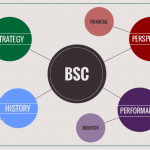Why does it take my bank 90 days to approve a loan?
A Balanced Scorecard approach to optimizing lending operations
There are two major components that keep banking operations spinning: deposits and loans. However, battles are never carried out for deposits. The banking industry is all about lending. Observers, however, can’t but notice the irony. It is loans that yield the highest profits for banks, but they can also be a bank’s premier cause for financial failure and risk.
As a result, a bank’s ability to manage the performance of its lending operations is what dictates its place and position on the market. So how should a bank manage its lending operations, and for what purposes?
How?
- By selecting the right KPIs to analyze the performance of lending processes;
- By making use of the adequate KPI selection techniques;
- By maximizing the balance between qualitative and quantitative KPIs;
- By constantly monitoring the performance of lending operations;
- By regularly recalibrating the lending performance framework and continuously adapting to the shifts in the banking industry.
For what purposes?
- Effective loan operations can reduce a bank’s exposure to risk;
- Educated front office personnel can reduce the paperwork turnaround time and, therefore, increase customer satisfaction with the bank’s service levels;
- Efficient back office analysis contributes to the optimization of lending process flows;
- Quality lending services can minimize the risk for loan defaults and favor the reputational index of the bank.
Someone told me the other day: “It takes 90 days for a mortgage loan to be approved in our country. How can we reduce this time from 90 days to 14 days? 14 days sounds better, doesn’t it?”
There can be multiple causes to this extended loan approval cycle time, and the most straightforward of them is the process itself. So, the first thing we can do is set an objective to improve the process, which in this case would mean enhancing the lending, approval and disbursement times.
We can use indicators to assess the actual performance of lending operations, and thereon, set targets for these performance variables that help us improve the overall mechanism. Variables, KPIs and the BSC are so adaptable, we can even use them on a more global scale.
However, in this case, the objective is simple: “Expedite the lending approval process.” Some of the KPIs that can help support this objective are as simple as: # Retail loan processing cycle time and % Past due loan approvals. The first KPI helps me calculate an average against the minimum and maximum loan-processing times. The second KPI tells me how many of the loan applications submitted for approval are past due.
Self-assessment is often the first step towards improvement. And if I were a bank I would first want to know if I indeed have a problem with my lending processes in terms of loan processing time. By calculating the average loan processing time and comparing it with national benchmarks, I can easily figure out whether my loan approval time is within or outside of boundaries.
By balancing the # Retail loan processing cycle time with % Past due loan approvals, I can get an account of both the amount of time it takes the bank to approve a loan and the quality of the loan approval process by calculating the percentage of loans submitted for approval that are considered past due.
If the % Past due loan approvals are starting to weigh heavily on my lending operations, this either means that my loan-related activities are inefficient or that my target for loan approval time is not properly set. Setting unrealistic targets can have damaging outcomes, especially when they are not properly documented.
By using the Balanced Scorecard approach, I can cluster this objective under the internal processes perspective and complement it with a couple of other goals such as ensuring portfolio growth and achieving compliance with regulations. Setting KPIs for these other two objectives ensures that, as far as my internal processes go, I am not only expediting the loan approval time, but I am also trying to ensure portfolio growth to keep my operations going and attain compliance with regulations to reduce aversion to risk.
In conclusion: Why use a Balanced Scorecard approach to optimize lending operations? Here are a few benefits:
- The Balanced Scorecard provides executives with an architecture that translates the organizations’ strategic objectives into a coherent set of measures that drive performance;
- It allows companies to compare past results with current ones and set performance targets for future achievements;
- It emphasizes the importance of cascading strategic objectives to business units and further down, up until the individual level, while suggesting the need for a compensation system that links individual-related measures to strategic ones;
- To complement the financial perspective, the Balanced Scorecard introduces three additional non-financial measurement categories, which help provide an extended view on performance;
- The major strength of the Balanced Scorecard is that it molds together business vision with strategy, while ensuring company-wide acceptance of the enabled performance measures to achieve the overall desired state of performance;
- By analyzing Balanced Scorecard results, performance committees can identify causes for underperformance and suggest solutions for improvement.
Image source: Pixabay

Tags: Balanced Scorecard, Banking performance, KPI Selection






